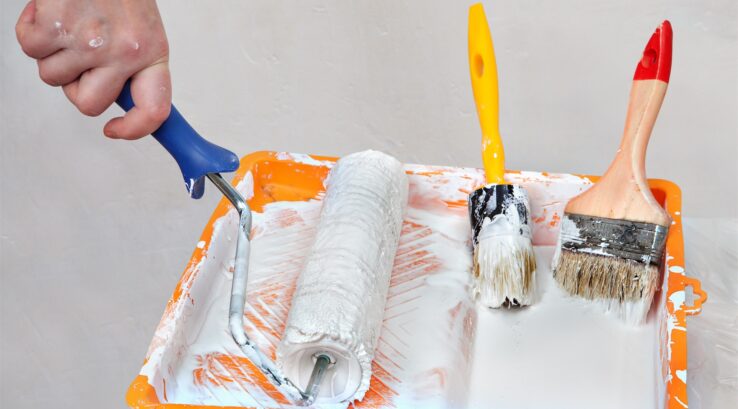You love your vinyl siding because it is virtually maintenance-free! But, what if you decide it’s time for a new exterior color? Let’s take a look at painting vinyl siding and when it might be an option to give your home a new look.
Can I paint my vinyl siding?
Before you head to the paint store to pick out your home’s next exterior color, it’s important to first access the condition of your siding. If your siding is cracked, splitting or compromised in any way, a fresh coat of paint isn’t going to cover up your siding’s flaws. Painting over siding that has reached its lifecycle can only hide damages that might create larger issues for your home such as pest infestation and leaks. Your first step should be a thorough assessment of your home’s current siding. New siding can not only give you the curbside refresh you are going for, it can also improve your home’s energy efficiency and provide your home the protection of siding backed by a lifetime guarantee.
Lesson #1- Make sure your current siding is in good condition.
Does your siding need to painted or due for a cleaning?
Over time, siding can get a buildup of dirt and even mildew growth depending on its orientation with the sun. It might appear that your siding is dull and drab when really it is just coated with dirt and grime. It’s important to clean your siding properly to prevent permanent damage to your vinyl that can be done by powerful pressure washing. Even if you decide you do want to paint your vinyl siding, starting with clean siding is the most important first step of the job.
Lesson #2- Clean your siding first before deciding to paint.
What is the best color and paint for your vinyl siding?
Quality paint manufacturers offer a specific line of paint for vinyl work. Because the color is exposed to the sun, the paint formulations are created to limit heat absorption while also adhering to the vinyl material. In most cases your vinyl siding will not need a primer if you use the appropriate paint rated for the exterior- an acrylic paint or urethane-modified acrylic paint.
In general darker paint colors will fade more quickly than choosing a lighter vinyl paint color and are at risk for buckling and warping. Because of the heat absorption darker colored siding can affect your utility bills as well.
Another way to choose your home’s new siding color is to get inspiration from your neighbors. Some communities have restrictions on colors so homeowners should always consult a neighborhood guidebook before making any decisions. Bring a sample color home to get a good look at the color in the day and the evening. Based on the location of your home on your property, the sun and shadows can affect the look of a color on site.
A safe siding paint color choice is to go with your home’s current color palate. Choose a hue within the color family you already have that will complement your home’s roof and landscaping. Keep it in the family, so to speak!
That said paint manufacturers offer an array of exterior siding colors and some provide guides for paint colors that coordinate with home styles such as Craftsman, Victorian and others.
Lesson #3- Research your paint color and bring home a sample to see what the color looks like on your property in the peak sunlight and in the evening.
Quality vinyl siding expertly installed should last a lifetime. Painting vinyl siding that is in good condition is however an option for homeowners who are ready for a new look for their exterior. Consult our Thompson Creek vinyl siding experts for a vinyl siding inspection and a quote to replace your siding with low-maintenance siding that can help improve the energy efficiency of your home. If your siding fails the test, we can help give you a new exterior with Thompson Creek’s diverse palette of attractive siding colors from rich, deep hues to light naturals.


